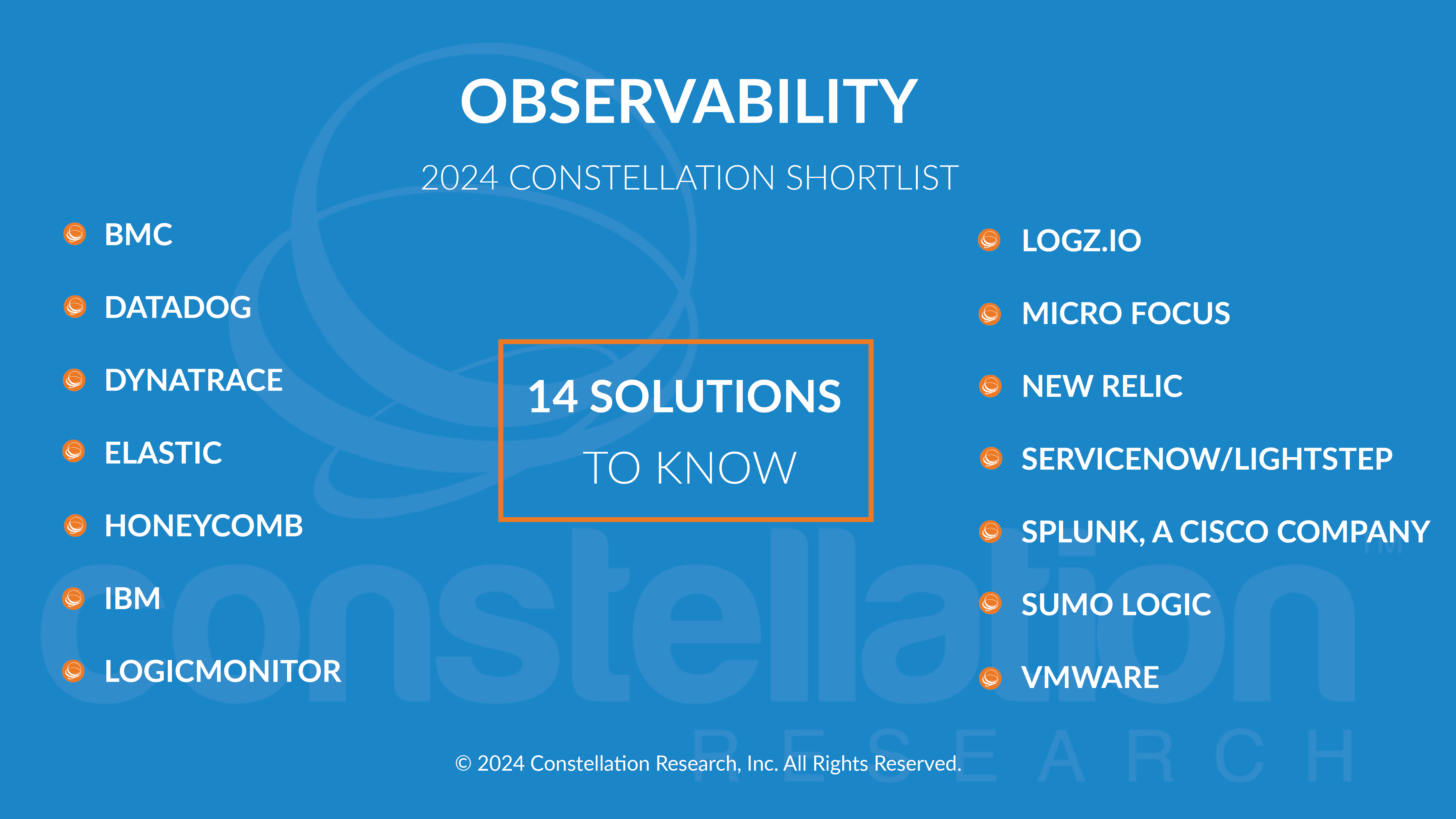
About This Constellation ShortList™
With faster-than-expected cloud-native adoption, appetite for companies to run on multi-cloud to reduce vendor lock-in, and desire to maintain highly sensitive workloads in-house leading to hybrid cloud, IT operations have become extremely complex over the past years. Each of these environments uses a different set of tools to make it even more complex. Observing the state of applications, services, infrastructure, data, and networks has become complex, thus increasing time to get insights from such distributed sets of data.
To make matters worse, even the major cloud vendors go down often and take hours to get back up and running. This leads to a chaotic customer environment without access to anything when everything is hosted in the cloud.
Observability is the ability to monitor the internal states of systems using the externally exhibited characteristics of those systems. It provides the ability to predict the future behavior of those systems using data analysis and other technologies. A major difference between monitoring and observability is the fact that observability helps predict the issues before they happen—most of the time.
For enterprises to build fully automated, self-healing, highly reliable, and always-available systems, observability systems should be core to any enterprise—whether on the cloud or in local data centers, or somewhere in between. Given that most modern enterprise systems are microservices-based, quick, agile, serverless enabled, and live only for short times, observing the issues before they happen and initiative corrective measures and remedies are more important than ever.
Threshold Criteria
Constellation considers the following criteria for these solutions:
- Telemetry variety—support for logs, metrics, traces, and events
- Ease of instrumentation
- Integration with major AIOps, DevOps, and incident management platforms
- Ability to observe multi-cloud solutions—such as AWS, GCP, Azure, and so on
- Ability to observe hybrid solutions—such as in the cloud and on-premises
- Full-stack observability—ability to observe the entire software stack
- Data aggregation and co-relation capability
- Ability to ingest open-source telemetry—such as Prometheus, Jaeger, Fluentd, and so on
- Use of Generative AI in observability such as Actionable Insights, automating incident resolution, automating ticket resolution, ticket deflection, automating observability, synthetic data creation to test real world scenarios
The Constellation ShortList™
Constellation evaluates more than 50 solutions categorized in this market. This Constellation ShortList is determined by client inquiries, partner conversations, customer references, vendor selection projects, market share and internal research.
- BMC
- DATADOG
- DYNATRACE
- ELASTIC
- HONEYCOMB
- IBM
- LOGICMONITOR
- LOGZ.IO
- MICRO FOCUS
- NEW RELIC
- SERVICENOW/LIGHTSTEP
- SPLUNK, A CISCO COMPANY
- SUMO LOGIC
- VMWARE
Frequency of Evaluation
Each Constellation ShortList is updated at least once per year. Updates may occur after six months if deemed necessary.
Evaluation Services
Constellation clients can work with the analyst and the research team to conduct a more thorough discussion of this ShortList. Constellation can also provide guidance in vendor selection and contract negotiation.


